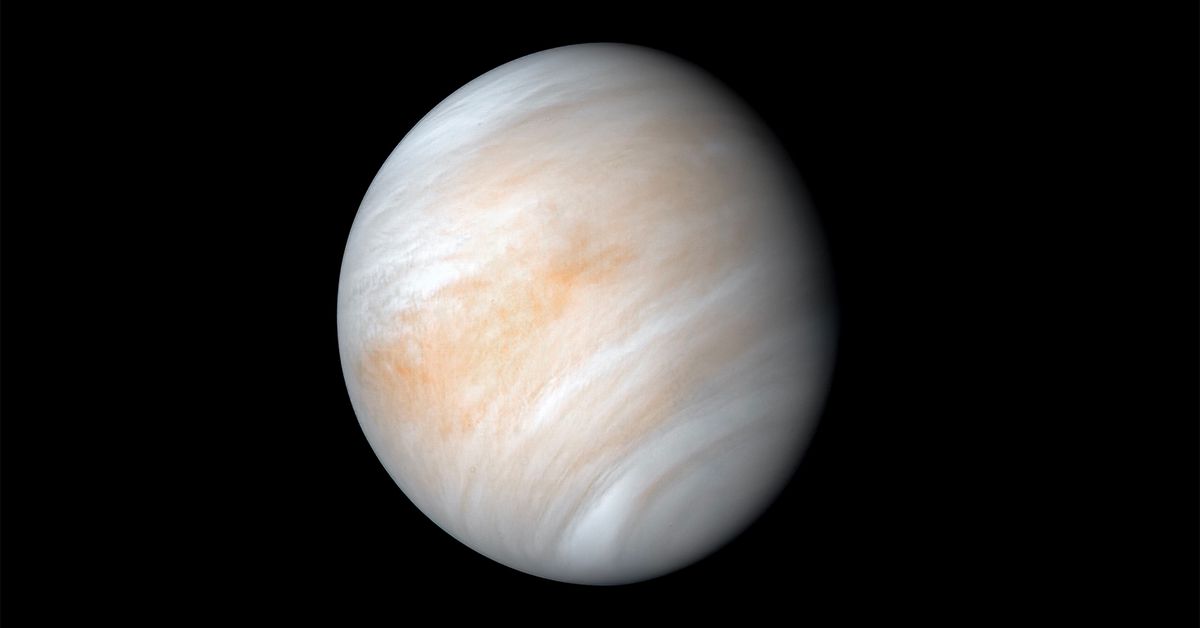NASA will send two missions to Venus for the first time in over 30 years
Source: The Verge added 03rd Jun 2021The agency has picked two new robotic missions to explore the hot hell-world of Venus, Earth’s neighbor and the second planet from the Sun, administrator Bill Nelson announced on Wednesday. The two missions, DAVINCI+ and VERITAS, were among four competing proposals under the latest round of NASA’s Discovery Program, which manages smaller planetary exploration missions with a slim budget of roughly $500 million each.
“These two sister missions both aim to understand how Venus became an inferno-like world capable of melting lead at the surface,” Nelson said during his first “State of NASA” address at the agency’s headquarters in Washington, DC on Wednesday. “They will offer the entire science community a chance to investigate a planet we haven’t been to in more than 30 years.”
DAVINCI+, slated to launch around 2029, will mark the first US-led mission into the atmosphere of Venus since 1978, when NASA’s second Pioneer mission plunged into Venusian clouds for scientific study. The spacecraft will fly by Venus twice to snap close-up photos of the planet’s surface before tossing a robotic probe into its thick atmosphere to measure its gasses and other elements.
Interest in Venus spiked last year during NASA’s review of the four missions, when a separate international team of researchers published findings that the noxious gas, phosphine, was possibly floating in the clouds of Venus — an intriguing theory that hinted at the first signs of off-world life, as phosphine is known to be made primarily by living organisms. But other researchers disputed the team’s findings, leaving the phosphine theory open-ended. DAVINCI+’s plunge through Venus’ atmosphere could decisively settle that mystery.
When the research was published, NASA’s previous administrator, Jim Bridenstine, said “it’s time to prioritize Venus.” NASA’s science associate administrator, Thomas Zurbuchen, tells The Verge that although the two probes could help confirm the phosphine research, they were picked for their scientific value, proposed timeline, and other factors independent of the phosphine findings.
The second mission, VERITAS, is a probe slated to launch around 2028, just before DAVINCI+. It’ll orbit Venus and map its surface much like NASA’s Magellan probe did for four years beginning in 1990, but with a much sharper focus that will give scientists a better picture of the planet’s geological history. It’ll use a synthetic aperture radar and track surface elevations to “create 3D reconstructions of topography and confirm whether processes such as plate tectonics and volcanism are still active on Venus,” NASA said in a statement.
Another camera on VERITAS will be sensitive to a wavelength that could spot signs of water vapor in Venus’ atmosphere, which, if detected, could hint that active volcanoes had been degassing on the planet’s surface sometime long ago.
Taken together, the two missions make clear that NASA is finally going all in on Venus, a spicy-hot planet long sidelined by other, more scientifically popular planets like Mars. The two Discovery-class missions that competed with DAVINCI+ and VERITAS were TRIDENT, which would’ve studied Neptune’s icy moon Triton, and the Io Volcano Observer (IVO), which would’ve studied the tidal forces on Jupiter’s moon Io.
The twin missions to Venus aim to confront the possibility that the planet was once habitable. “Venus is closer to the Sun, it’s a hot house now, but once upon a time it might’ve been different,” NASA’s Discovery program head Thomas Wagner tells The Verge. Studying the planet’s atmosphere up close could give scientists clues on how it evolved over time to allow Venus to become the hell world it is today, with surface temperatures of around 900 degrees Fahrenheit.
The missions could also help scientists learn how to look at exoplanets, distant planets in other solar systems. Though hot and unlivable, Venus sits in the Goldilocks zone of our solar system, a term scientists use to characterize the position of exoplanets whose distances from the Sun sit in just the right spot to foster life. Venus, Wagner says, could be a model, right next to Earth, to help us understand exoplanets farther away. The planet’s distance from our Sun also raises equally intriguing questions about why Venus turned into the hell-world it is today.
“Since Venus is in the goldilocks zone, we want to know what the heck went on on Venus,” Wagner says.
brands: AIM Budget DaVinci DC Discovery First Fly Hot ICY It Jupiter Magellan Million New Orbit other Pioneer Planet SNAP SUN Team Thomas Trident Triton Value Venus Wagner WAS Zone media: 'The Verge' keywords: aperture NASA Review
Related posts
Notice: Undefined variable: all_related in /var/www/vhosts/rondea.com/httpdocs/wp-content/themes/rondea-2-0/single-article.php on line 88
Notice: Undefined variable: all_related in /var/www/vhosts/rondea.com/httpdocs/wp-content/themes/rondea-2-0/single-article.php on line 88
Related Products
Notice: Undefined variable: all_related in /var/www/vhosts/rondea.com/httpdocs/wp-content/themes/rondea-2-0/single-article.php on line 91
Warning: Invalid argument supplied for foreach() in /var/www/vhosts/rondea.com/httpdocs/wp-content/themes/rondea-2-0/single-article.php on line 91
